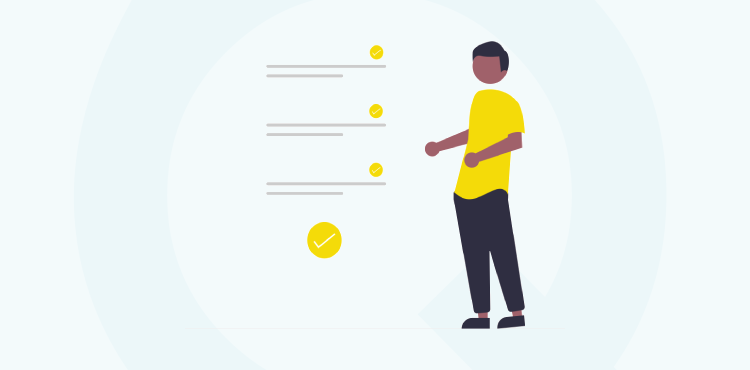Hiring diverse talent is important for business success. Yet, it’s not enough as the workplace experience is what makes people stay. Use these diversity games to bring your team together.
Diversity and inclusion at the workplace has been a hot topic, especially in 2021. Social justice events like Black Lives Matter and the 50th Anniversary of the LGBTQ+ Pride March make people more aware of Diversity, Equity and Inclusion (DEI).
Moreover, many leading companies like Google and Facebook published diversity numbers, showing their companies are friendly to all people.
However, workplace diversity extends beyond just hiring diverse people. Companies also need to consolidate employee relationships and make sure their opportunities are equal. To do this, DEI activities are helpful to foster close relationships among employees.
In this article, you’ll learn the definition and benefits of diversity at work. We’ve compiled five types of diversity games that are perfect for physical and digital workplaces.
What is diversity at work?
Diversity at work refers to hiring and developing employees from various backgrounds, including:
- physical condition, age, sexual orientation and gender identity;
- race, ethnicity and religion;
- education and economic status;
- skills and professional experience;
- citisenship status and national origins.
Hilton is an example of a company with excellent initiatives on workplace diversity. In fact, it placed first on DiversityInc’s Top 50 Companies in Diversity List.
The company’s executives are of different ethnicities, like Latino and Asian American. It also partners with minority-focused organisations to hire diverse talent, including people with disabilities.

Why diversity in a team is important
Below are three benefits of diversity in the workplace for both employees and employers.
Improve the company’s reputation
By applying diversity principles, you widen the talent pool and attract more qualified hires. 76% of employees and job seekers prioritise a diverse workplace when considering job offers. 32% even avoid companies that lack diversity.
Integrating diversity at the workplace can also prove that you contribute to ending inequality towards underrepresented groups. It eventually helps position your company as a desirable place to work at.
Higher employee engagement and well-being
An inclusive workplace makes employees aware of differences and avoids discriminating against other people’s backgrounds.
As a result, they’ll feel accepted and be confident to embrace their true selves. This level of confidence can improve interactions among employees since they will feel equal. Closer relationships can also support employee happiness, resulting in increased job satisfaction.
Increase work performance
A diverse team tends to reexamine facts and stay objective. It’s aware of potential biases, so employees will encourage their colleagues to consider all perspectives in the decision-making process.
Moreover, workplace diversity can increase creative thinking because different people bring unique ideas and perspectives with them.
Finally, combining these traits can result in higher revenues. Boston Consulting Group (BCG) shows companies with diverse teams have increased their revenue by 19% due to innovations.
5 types of diversity games to try
There are numerous team building activities to gain the benefits of having a diverse team.
We’ll go over five types of diversity games below. They include game examples, their purpose, the estimated time and number of participants, and the steps to play.
Video games
It’s a common misconception that video games focus on entertainment only. Some cover important topics, including diversity, different cultures, human rights and illegal immigration.
Here are a couple of video games for DEI activities:
- Minecraft. The Equity and Inclusion curriculum in Minecraft Education Edition helps players learn diversity and social justice movements in specific regions. Consider researching how to setup a Minecraft server to have more control over your gameplay by installing mods and inviting players.
- The Parable of the Polygons. Demonstrates how biases can lead to social segregation.
After the gameplay activities, ask the participants to reflect on the game. Then, discuss these topics:
- the game’s main events and problems;
- the game’s lessons;
- emotions while playing the game;
- connections between the game and real life.
Before deciding on the video game, see if your group can play it in real-time or if it should be played beforehand to follow the storyline.
Sharing and discussion games
This type of diversity games helps improve the communication skills of people in small groups. The games below help participants learn how to be more open by sharing personal stories.
Heard, Seen, Respected (HSR)
Team size: 4+ people in pairs
Time: 30+ minutes.
Purpose: Build empathy and trust among team members
How to play:
- Invite employees to think of a situation when they felt not heard, seen or respected.
- Pair them up and let them take turns to share the story for seven minutes each while the other person listens without interrupting.
- In pairs, each person shares their feelings about listening to the partner’s story and telling their own.
- Group two pairs to identify the patterns of not being HSR and reflect how the game addresses the issue.
I Am, But I Am Not
Team size: 6
Time: 40 minutes
Purpose: Acknowledge and confront common stereotypes
How to play:
- Give each participant a pen and paper.
- Ask them to create two columns: one titled “I Am” and the other titled “But I Am Not.”
- Let them fill in the columns based on their circumstances. For example, someone may write “I’m female, but I’m not spoiled.”
- Ask participants to share their answers and discuss the common stereotypes with others.
The Privilege Walk
Team size: 8 people
Time: 1 hour
Purpose: Understand the privileges or disadvantages of each team member
How to play:
First, subtly explain that people have some privileges that others don’t. Ask the members to stand in a line and read out loud 20 to 30 statements. When the statement applies to them, ask them to take a step forward or backwards.
Some of the statements include:
- If you’re left-handed, step back.
- If you’ve ever faced harassment, step back.
- If you have a car, step forward.
Let the participants see where their colleagues are on the line. Finally, sit in a circle and discuss their feelings and privileges.
My Fullest Name
Team size: 5-6 people
Time: 40 minutes
Purpose: Share unique histories of members’ names, including the familial and cultural meanings
How to play:
Ask participants to answer these questions about their names:
- Who gave you the name and why?
- Does the name have an ethnic or religious origin?
- How did you get certain nicknames?
- What should the colleagues call you?
Encourage the participants to be creative by including humour or writing a poem. Then, ask them to share their answers and let them recognise the similarities and differences.

Image: Pexels
Virtual activities
Many people have started working from home during the Covid-19 pandemic. This trend may persist even after the pandemic. Therefore, companies need to come up with fun virtual DEI activities. We have three virtual games for remote teams.
Virtual tours
Team size: 5-6 people
Time: 40 minutes
Purpose: “Visit” places from team members’ countries of origin
How to play:
Ask members to prepare a short presentation telling others about their hometown. They can also guide the colleagues through their hometown’s 360 virtual tours, if available.
Alternatively, enrol in a paid virtual tour programme, like Wild SF or Watson Adventures. These programmes come with a professional guide leading participants to different places with interactive activities.
Poker Face
Team size: 5-6 people
Time: 40 minutes
Purpose: Become aware of people’s stereotypes
How to play:
- Send one person to a breakout room.
- Choose an ethnic group, like the Japanese, and tell it to the rest. This ethnic group will be the identity of the one person in the breakout room.
- Invite that person back into the main room. Ask the rest of the members to describe or demonstrate the stereotypes of the ethnic group without mentioning the ethnicity itself.
- Ask the person to guess their identity.
Online quizzes
Team size: 10+ people
Time: 40 minutes
Purpose: Know other cultures and rank members’ cultural knowledge
How to play:
Have a short presentation from each member to tell unique facts about their culture. Then, gamify this activity using an online quiz like Kahoot and give the winner a gift.
Cultural celebration parties
Create a diversity calendar consisting of multicultural celebrations and holidays. This will help build a sense of belonging by knowing team members’ cultural events and celebrating them.
Snapshot Board
Team size: 5+
Time: 40 minutes
Purpose: Share personal memories with colleagues
How to play:
Ask team members to print a photo of their personal experiences relating to their origins. Let them paste it on a board and share the experience. Display the board in the office.
Potluck lunch
Team size: 8+ people
Time: A lunch break
Purpose: Get to know each other’s special dish
How to play:
Choose a certain date for your team to gather on. Then, ask your team members to bring a dish representing their cultural identity and share it with others. During the meeting, you can encourage participants to wear their traditional clothes and tell the story behind the dish.
Board games
Board games are great for improving communication, teamwork and problem-solving skills. Moreover, they often aren’t expensive.
Here are two board games for diversity activities.
Inequality-opoly
Team size: 4 people
Time: 20 minutes to 2 hours
Purpose: Build awareness of how racism and sexism affect people’s wealth
How to play:
The game is inspired by Monopoly, but each player has an identity, like White man, Asian woman or Black man. The players enjoy privileges and face obstacles based on their identity.
For example, when the players pass the “Start”, they’ll get money depending on their race and gender based on the US wage gap data.
Although Inequality-opoly uses US data and conditions, the game’s message applies to players in any area.
Keep It Real
Team size: 3+ people
Time: 1 hour
Purpose: Trigger meaningful dialogues about diversity
How to play:
Keep It Real contains several types of questions, some of which include:
- The World. Questions about the general situation in the world, such as the perceived differences between men and women.
- Fantasy. “What if” questions, making people imagine different situations. A sample question is “If you could be any race, which one would you choose and why?”
- Personal. These questions relate to people’s opinions and feelings, like whether they feel comfortable in their skin or compare themselves to others.
A person choosing a question will be the Leader of that turn. The Leader reads the question aloud, answers it first and the remaining players follow with their answers.
In Summary
Team diversity means hiring people from different backgrounds, ensuring they have equal opportunities in the company. It can bring many benefits, including a better company image, work performance, and employee engagement.
However, building a solid diverse team requires effort. Consider organising team bonding activities that help reinforce the relationships between team members.
Here are five types of diversity games at the workplace:
- video games;
- sharing and discussion games;
- virtual activities;
- cultural celebration parties;
- board games.
These activities aim to create a sense of belonging and encourage team members to be open about their backgrounds in a fun way.
We hope this article has given you ideas for your DEI activities to build a happier team along the way.
About the Author
Maulidina Marlita Firdausi is a writer for Hostinger’s Content team. With a passion for digital marketing and writing, she is excited to share her knowledge with people around the globe. When she’s not writing, you can find her editing videos.



